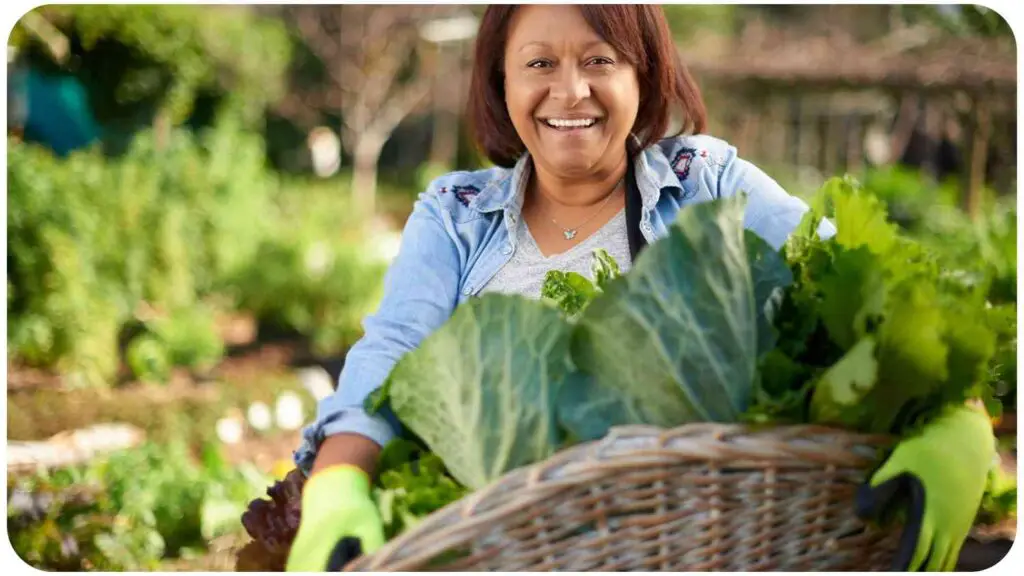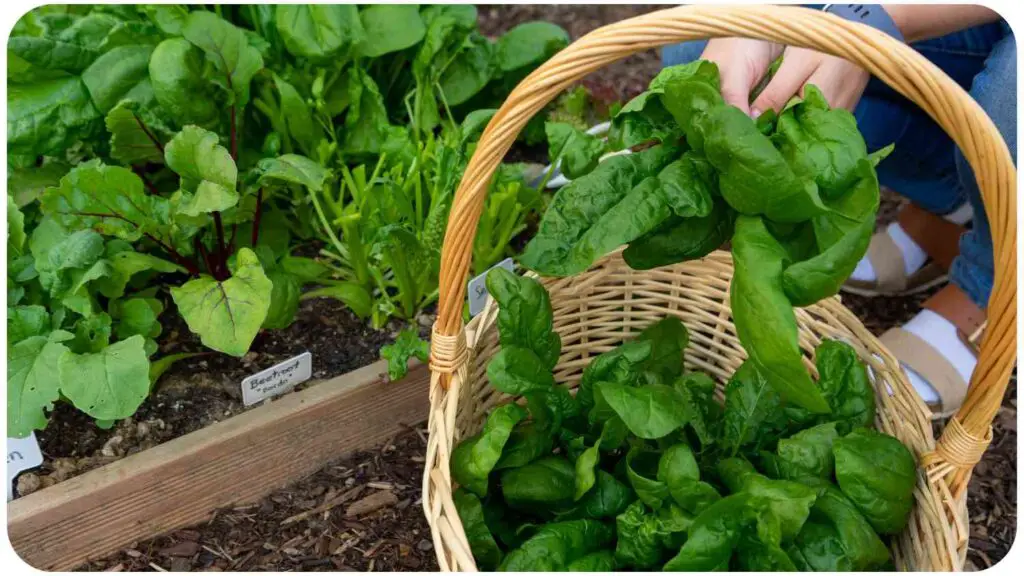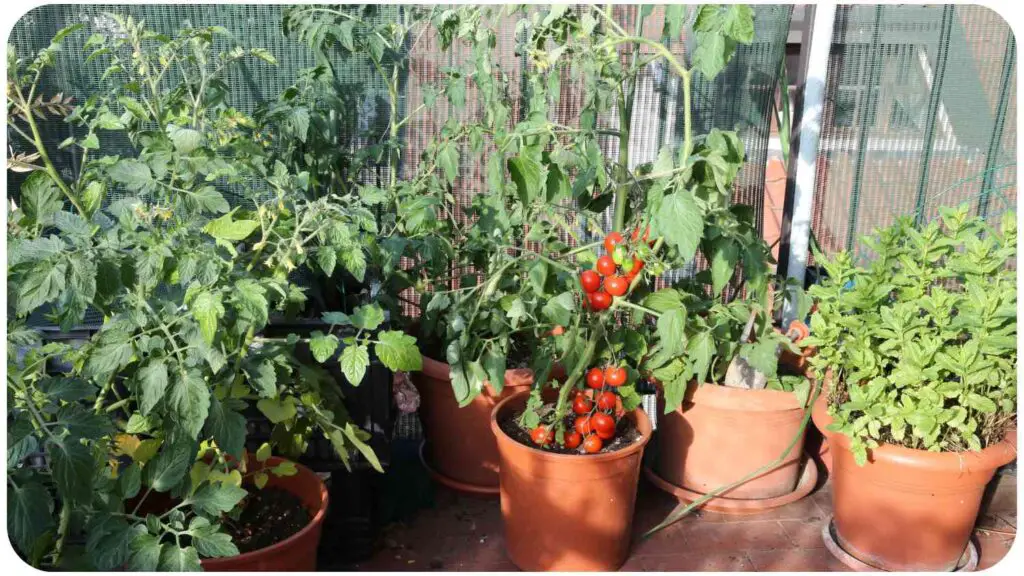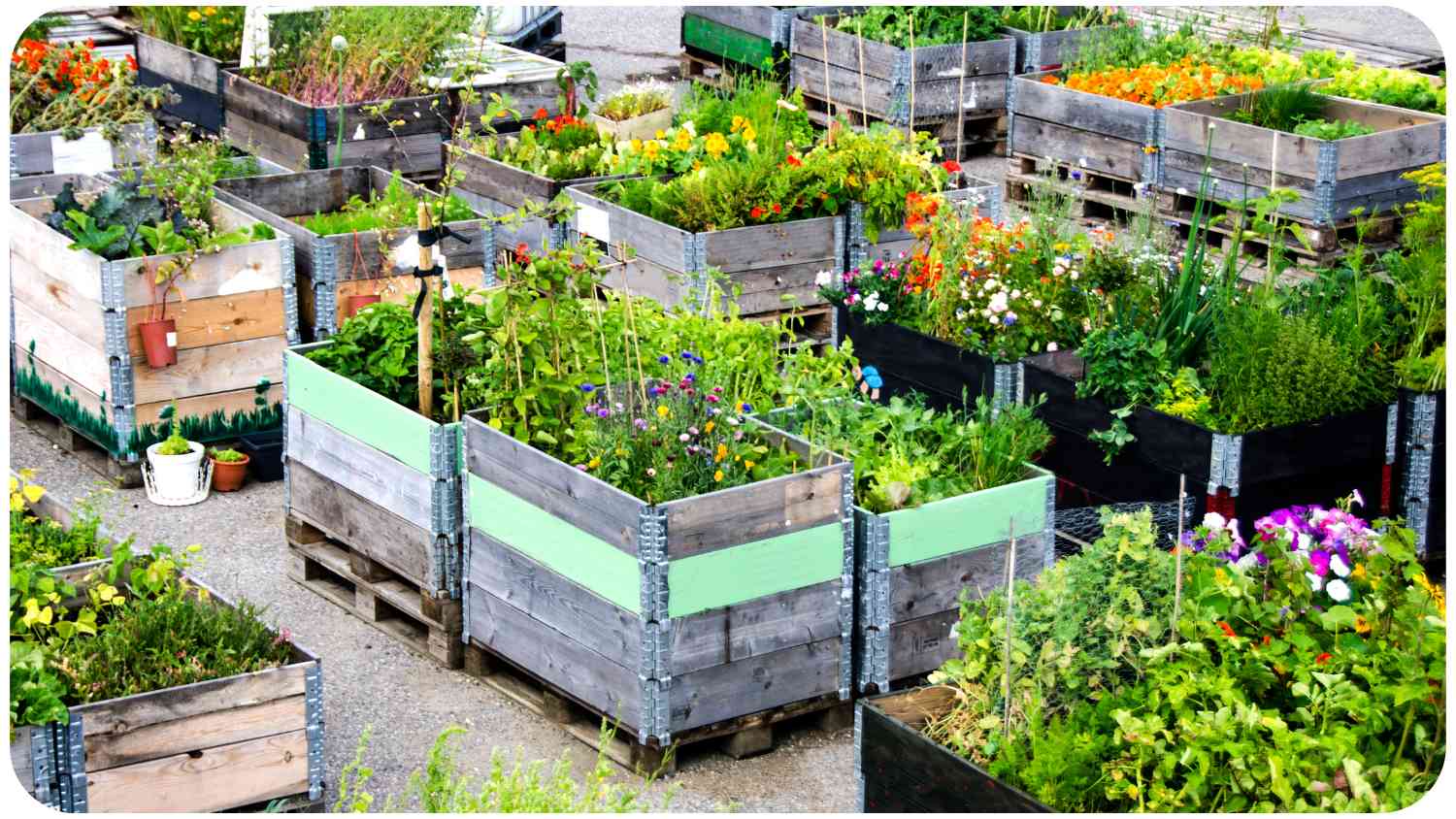Welcome to the world of small-space gardening! In this article, we’ll explore how you can master the art of urban container gardening, turning even the tiniest balcony or rooftop into a lush oasis of greenery. Whether you’re a seasoned gardener or a complete novice, there’s something magical about growing your own herbs, vegetables, and flowers right in the heart of the city.
| Key Takeaways |
|---|
| 1. Maximize small spaces with vertical gardening techniques. |
| 2. Choose suitable containers and plants for your space. |
| 3. Implement sustainable practices for eco-friendly gardening. |
| 4. Regular maintenance is essential for a thriving urban garden. |
| 5. Get creative with design ideas to personalize your space. |
2. Benefits of Small-Space Gardening

Small-space gardening offers a plethora of benefits, from providing fresh produce to reducing stress and improving air quality. Let’s take a closer look at some of the advantages:
Harnessing the power of lunar cycles can significantly enhance plant growth and yield. By aligning planting and maintenance tasks with lunar phases, gardeners can optimize their efforts for maximizing plant growth and overall garden productivity.
Table: Comparison of Container Types
| Container Type | Pros | Cons |
|---|---|---|
| Terracotta Pots | Classic look, good for herbs and flowers | Prone to cracking in freezing temperatures |
| Plastic Pots | Lightweight, affordable, retains moisture | May degrade over time in sunlight |
| Fabric Pots | Excellent drainage, promotes root health | Can dry out quickly in hot weather |
3. Choosing the Right Containers
Selecting the appropriate containers is crucial for the success of your urban garden. Each type has its own advantages and considerations. Let’s compare them:
Table: Comparison of Container Types
| Container Type | Pros | Cons |
|---|---|---|
| Terracotta Pots | Classic look, good for herbs and flowers | Prone to cracking in freezing temperatures |
| Plastic Pots | Lightweight, affordable, retains moisture | May degrade over time in sunlight |
| Fabric Pots | Excellent drainage, promotes root health | Can dry out quickly in hot weather |
Terracotta pots are beloved for their timeless aesthetic and suitability for herbs and flowers. However, they can be fragile in extreme cold. Plastic pots are lightweight, budget-friendly, and retain moisture well, but they may deteriorate with prolonged exposure to sunlight. Fabric pots offer superb drainage and root health but may dry out faster in hot climates.
When choosing containers, consider factors such as durability, aesthetics, and the needs of your plants.
Transforming kitchen scraps into nutrient-rich compost is a sustainable gardening practice that benefits both plants and the environment. With compost magic, gardeners can minimize waste while enriching soil fertility for healthy plant growth.
4. Selecting the Ideal Location

The success of your urban container garden largely depends on its location. Most plants require at least six hours of sunlight per day, so choose a spot that receives adequate sunlight. South-facing balconies or rooftops are ideal for maximum sun exposure.
Additionally, consider factors such as wind exposure and accessibility for watering and maintenance. Avoid placing containers in areas with strong winds, as they can topple over and damage your plants.
5. Soil and Fertilizer Essentials
Good soil is the foundation of a thriving container garden. Choose a high-quality potting mix that is well-draining and rich in organic matter. Avoid using garden soil, as it may compact in containers and hinder root growth.
Table: Essential Soil Components
| Component | Function |
|---|---|
| Peat Moss | Retains moisture, improves soil structure |
| Perlite | Enhances drainage, prevents compaction |
| Compost | Adds nutrients, promotes healthy growth |
Mixing in compost or slow-release fertilizer can provide essential nutrients for your plants throughout the growing season. Be sure to replenish the soil annually to maintain fertility.
6. Picking the Perfect Plants
When it comes to urban container gardening, choosing the right plants is key to success. Not all plants thrive in containers, so it’s essential to select varieties that are well-suited to small spaces.
Vertical gardening offers a space-saving solution for urban dwellers looking to cultivate lush greenery in limited areas. Discover the secrets to creating an urban oasis with vertical gardens, maximizing green space and aesthetic appeal in small spaces.
Table: Best Plants for Urban Container Gardens
| Plant | Type | Sunlight | Space Requirements | Notes |
|---|---|---|---|---|
| Basil | Herb | Full sun | Compact | Great for culinary use, requires frequent pruning |
| Cherry Tomatoes | Vegetable | Full sun | Moderate | Compact varieties are well-suited to containers |
| Petunias | Annual Flower | Full sun to partial shade | Moderate | Provide vibrant color and trailing habit |
Herbs like basil are perfect for small containers and provide fresh flavors for your culinary creations. Cherry tomatoes are excellent choices for vegetable gardening in containers, especially compact varieties bred for small spaces. For added visual appeal, consider planting annual flowers like petunias, which provide bursts of color and can trail elegantly over the edges of containers.
Before purchasing plants, research their specific requirements for sunlight, water, and space to ensure they will thrive in your urban garden.
7. Watering and Maintenance Tips
Proper watering is essential for the health of your container garden. Since containers dry out faster than garden beds, it’s important to water regularly, especially during hot weather.
Table: Watering Guidelines for Container Plants
| Plant | Frequency | Signs of Overwatering | Signs of Underwatering |
|---|---|---|---|
| Basil | Every 2-3 days | Yellowing leaves, soggy soil | Wilting, dry soil |
| Cherry Tomatoes | Daily | Yellowing lower leaves | Drooping leaves, dry soil |
| Petunias | Every 1-2 days | Moldy soil surface | Wilting, dry soil |
Monitor your plants closely and adjust your watering schedule based on weather conditions and the moisture level of the soil. Mulching the surface of the soil can help retain moisture and reduce the frequency of watering.
Regular maintenance tasks include pruning, fertilizing, and monitoring for pests and diseases. By staying proactive, you can ensure a bountiful harvest and beautiful blooms throughout the growing season.
8. Maximizing Vertical Space
In a small-space garden, every inch counts. Vertical gardening allows you to make the most of limited space by utilizing walls, trellises, and hanging baskets.
Vertical gardens not only maximize space but also add visual interest to your outdoor oasis. Here are some creative ideas for vertical gardening:
Harnessing the sensory delights of a garden after dark adds a new dimension to outdoor spaces. Cultivating plants that thrive in the evening invites tranquility and relaxation, creating a sensory experience that extends beyond daylight hours in a sensory garden.
Table: Vertical Gardening Ideas
| Technique | Description | Suitable Plants |
|---|---|---|
| Trellises | Install trellises against walls or fences to support climbing plants such as cucumbers, beans, and peas. | Climbing vegetables, flowering vines |
| Hanging Baskets | Hang baskets from hooks or railing brackets to add greenery without taking up floor space. | Ferns, trailing succulents, strawberries |
| Wall-mounted Planters | Attach planters to walls or fences using brackets or hooks, creating a living wall of herbs or flowers. | Herbs, annual flowers, small ornamental grasses |
By thinking vertically, you can expand your growing area and create a stunning focal point in your small-space garden.
9. Dealing with Common Challenges
Urban gardening comes with its own set of challenges, from limited space to environmental factors like pollution and noise. However, with some creativity and perseverance, you can overcome these obstacles and enjoy a thriving garden.
Table: Common Urban Gardening Challenges and Solutions
| Challenge | Solution |
|---|---|
| Limited Space | Maximize vertical space, use compact plant varieties, and utilize creative container arrangements. |
| Pollution | Choose plants known for their air-purifying properties, such as spider plants and peace lilies. |
| Pests and Diseases | Practice good garden hygiene, regularly inspect plants for signs of pests or disease, and use organic pest control methods when necessary. |
10. Sustainable Practices for Urban Gardening

Incorporating sustainable practices into your urban garden not only benefits the environment but also enhances the health and productivity of your plants. Here are some tips for sustainable urban gardening:
Mastering small-space gardening with urban containers opens up possibilities for greenery in constrained environments. With the right techniques and containers, even the tiniest spaces can become flourishing gardens, transforming urban areas into vibrant pockets of nature and beauty for small space gardening
Table: Sustainable Gardening Practices
| Practice | Description |
|---|---|
| Composting | Create your own compost from kitchen scraps, yard waste, and plant trimmings to enrich the soil and reduce waste. |
| Rainwater Harvesting | Collect rainwater in barrels or containers to use for watering your garden, reducing reliance on municipal water sources. |
| Organic Pest Control | Use natural methods such as companion planting, neem oil, and beneficial insects to control pests and minimize the use of chemical pesticides. |
By implementing these sustainable practices, you can create a more eco-friendly and self-sufficient urban garden.
11. Harvesting and Enjoying Your Bounty
One of the most rewarding aspects of gardening is harvesting and enjoying the fruits of your labor. Whether it’s fresh herbs for cooking, crisp vegetables for salads, or vibrant flowers for bouquets, there’s nothing quite like the satisfaction of harvesting from your own garden.
Table: Harvesting Tips for Common Garden Crops
| Crop | Harvesting Time | Harvesting Technique |
|---|---|---|
| Basil | When plants are bushy and full | Pinch off individual leaves or harvest entire stems. |
| Cherry Tomatoes | When fruits are firm and fully colored | Twist or snip stems to remove fruits from the vine. |
| Petunias | When flowers are fully open and vibrant | Snip stems just above a leaf node to encourage new blooms. |
12. Creative Design Ideas
In addition to being functional, your urban container garden can also be a beautiful and inviting space. With a bit of creativity and imagination, you can design a garden that reflects your personality and style. Here are some creative design ideas to inspire you:
Table: Creative Design Ideas for Urban Container Gardens
| Design Element | Description | Suitable Plants |
|---|---|---|
| Colorful Containers | Choose containers in a variety of colors and shapes to add visual interest to your garden. | Any plant variety can be paired with colorful containers for a vibrant look. |
| Vertical Garden Walls | Create a living wall by arranging containers vertically on a trellis or mounting them on a wall. | Succulents, ferns, trailing vines |
| Theme Gardens | Design themed gardens such as a culinary garden with herbs and vegetables for cooking, or a pollinator garden to attract bees and butterflies. | Culinary herbs, pollinator-friendly flowers |
Let your imagination run wild and experiment with different combinations of plants, containers, and design elements to create a unique and personalized urban oasis.
13. Success Stories: Urban Container Gardening Heroes
To further inspire and motivate you on your urban gardening journey, let’s take a look at some success stories from fellow urban container gardening enthusiasts:
Table: Urban Container Gardening Success Stories
| Gardener | Challenge | Solution | Outcome |
|---|---|---|---|
| Sarah Johnson | Limited balcony space | Utilized vertical gardening techniques and compact plant varieties to maximize space. | Sarah now enjoys a lush and productive balcony garden, even in a small urban apartment. |
| Javier Rodriguez | Harsh urban environment | Employed sustainable gardening practices such as composting and rainwater harvesting to create a resilient garden. | Javier’s garden not only thrives in the city but also contributes to a healthier urban ecosystem. |
These success stories demonstrate that with dedication, creativity, and a bit of ingenuity, anyone can create a thriving urban container garden, regardless of space constraints or environmental challenges.
14. Conclusion
Embarking on the journey of small-space gardening with urban containers opens up a world of possibilities, allowing you to transform even the smallest of spaces into vibrant green sanctuaries. Throughout this guide, we’ve explored the essential elements of successful urban container gardening, from choosing the right containers and plants to implementing sustainable practices and creative design ideas.
By following the tips and techniques outlined in this article, you can create a thriving garden oasis right in the heart of the city. Whether you’re a seasoned gardener or a novice with a green thumb, there’s something uniquely rewarding about nurturing plants and witnessing the fruits of your labor.
So, roll up your sleeves, gather your supplies, and let your imagination take flight as you embark on your urban gardening adventure. With a little bit of effort and a whole lot of love, your urban container garden will flourish, bringing joy, beauty, and sustenance to your urban landscape.
Further Reading
- How to Maximize Small Spaces for Urban Gardening: This blog post offers valuable insights and practical tips for making the most of limited space in urban gardening. Learn how to optimize small spaces for lush and productive gardens.
- Mastering Container Gardening: Cultivating Beauty in Small Spaces: This course explores the art and science of container gardening, providing expert guidance on selecting containers, choosing suitable plants, and maintaining thriving gardens in small spaces.
- Container Gardening in Small Spaces: Discover innovative container gardening techniques tailored specifically for small spaces. This resource offers practical advice and inspiration for urban gardeners looking to create beautiful and sustainable gardens.
FAQs
How do I choose the right containers for my urban garden?
Select containers that are appropriate for the size and needs of your plants. Consider factors such as material, drainage, and aesthetics to ensure your containers provide a suitable environment for plant growth.
What are some suitable plants for small-space gardening?
Popular choices for small-space gardening include herbs like basil and thyme, compact vegetables like cherry tomatoes and peppers, and low-maintenance flowers like petunias and marigolds.
How often should I water my container garden?
The frequency of watering depends on factors such as plant type, weather conditions, and container size. Generally, container gardens may need watering once or twice daily, especially during hot weather.
How can I maximize vertical space in my urban garden?
Utilize vertical gardening techniques such as trellises, hanging baskets, and wall-mounted planters to make the most of limited space. Choose climbing or trailing plants that thrive in vertical environments.
What are some common pests and diseases in container gardening, and how can I prevent them?
Common pests include aphids, spider mites, and whiteflies, while diseases such as powdery mildew and root rot can affect container plants. Practice good garden hygiene, monitor plants regularly, and use organic pest control methods to prevent infestations and diseases.

For 15 years, Hellen James has worked in the gardening industry as an expert and landscape designer. During her career, she has worked for a variety of businesses that specialize in landscaping and gardening from small firms to large corporations.

